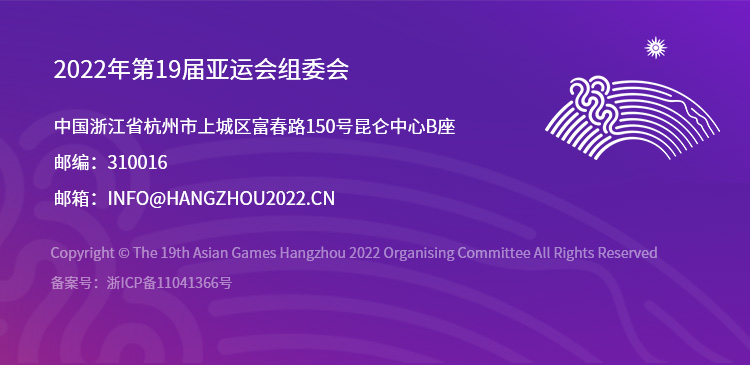杭州2022年第19届亚运会火炬设计方案名为“薪火”,设计思想源自实证中华五千年文明史的良渚文化,以其庄重大气、意蕴深远的造型,通过火炬手们的手手相传,向世界展现中国设计的独特创意、中国制造的硬核力量。
火炬造型自下而上“生长”,整体高730毫米,净重1200克。炬基,以八条水脉为文明之脉,代表浙江八大水系;炬身,以良渚螺旋纹为演化,形似指纹,自然交织,精致细密;炬冠,以玉琮语意为特征,方圆相融,昂然而立;出火口设计源自“琮”最早的甲骨文字形,寓意“光在内周而复始”;整体轮廓曲线犹如手握薪柴,在动静之中迸发出由外向融合的运动员力量感和汇聚态势。
“薪火”,喻意着中华文明薪火相传。火炬以玉琮为表征,以人文历史和山川风物为主干,既是对中华文化的致敬和传承,也向世界展示了真实、立体、全面的古代中国、现代中国和未来中国,使中华文明圣地闪耀出更加璀璨的光芒。
“薪火”,表达了各国运动员的团结共融。火炬四面八槽,聚合至顶部中心@形象,以生命之河的形式象征各国家和地区运动员汇聚杭州共襄盛事,呼应了本届亚运会“心心相融,@未来”的主题口号;炬身纹样以中国结穗尾结束,以东方元素展现着亚运大舞台上的团结共融,也寄托着面向未来,共建人类命运共同体的良好愿望。
“薪火”,展示了浙江智造的魅力。火炬以天然圣火与智能技术为双核支撑,在历届大型赛事火炬设计中独树一帜。经过反复论证优化,先后突破工艺、材料、生产、运输等技术瓶颈。原材料通过区块链技术数字上链,利用可溯源机制确保真实性;金属部分采用1070铝合金旋压成型工艺,表面先后经历激光精雕和阳极氧化两道工艺淬炼;握把采用可回收生物质材料,环保轻盈,便于手持;燃料采用生物质燃气,清洁安全可靠。
该项目由中国美术学院工业设计研究院院长王昀教授担任设计指导,中国美术学院教师包天钦、陈赟佳、谷丛联合带领团队历时近一年,反复修改论证后共同创作完成。
The torch of the 19th Asian Games Hangzhou 2022 is named "Eternal Flame". The design was inspired by the Liangzhu Culture that is testament to the 5000-year-old Chinese civilization. Apart from the majestic shape with profound implications, the torch also presents to the world the unique creativity of Chinese design and its manufacture prowess.
The torch is shaped in a way that "grows" from bottom to top, with an overall height of 730 millimetres and a net weight of 1,200 grams.
The base of torch is embossed with eight water veins symbolising the evolution of civilisation and representing the eight major river systems in Zhejiang;
The torch body is designed based on the evolution from dermatoglyphic fingerprint patterns specific to the Liangzhu Culture, which are naturally intertwined and exquisite.
The torch head is characterized by the meaning of Jade Cong, one of the ritual jades, showing a harmonious square-round integration; and the burner nozzle is designed from the earliest oracle bone inscription of "琮" (literally Jade Cong) with the implied meaning of "light traveling in cycle inside". In the big picture, the profile curve is like firewood in hand, a combination of motion and quietness that gives people infinite reveries of the past, the present and the future.
“Eternal Flame” means that the Chinese civilisation is passed on from generation to generation. The torch is characterized by Jade Cong and threaded upon with Chinese heritage, natural sceneries and local customs. Not only does this pay tribute to and represent the inheritance of Chinese culture, but also it shows the world the real ancient China, modern China and future China in a visualized way across the board. The design is intended to shine a more brilliant light on this sacred land of Chinese civilisation.
“Eternal Flame” speaks to the unity of athletes from all countries and regions in diversity. The torch features eight grooves on all sides, converging to the @ icon at the top center. The form of a river of life used is symbolic of the gathering of athletes from various countries and regions in Hangzhou to celebrate the grand occasion together, echoing the slogan of the Games, "Heart to Heart, @Future". The dermatoglyphic pattern ends with Chinese knot tassels to demonstrate the unity in diversity of athletes involved in the Asian Games with oriental elements, with good wishes to build a community with shared future for mankind.
“Eternal Flame” shows the charm of intelligent manufacturing in Zhejiang. Backed by natural flame and intelligent technology at the core, the torch even stands out among the torch designs from previous major events. After repeated trials and optimisations, it has seen technical obstacles overcome in process, materials, production and transportation. The raw materials are digitally mapped to the blockchain, and the traceability mechanism is used to ensure authenticity. For the metal part, the AA 1070 rotary forming process is adopted with the surface undergoing laser engraving and anodization. The grip made of recycled raw materials is eco-friendly, light and easy to hold, and the fuel is heated with biomass gas, which is safe, clean and reliable.
After repeated revisions and demonstrations for nearly a year, the design was completed by the team led by Bao Tianqin, Chen Yunjia and Gu Conglian, teachers of China Academy of Art, and guided by Prof. Wang Yun, Dean of the Industrial Design and Research Institute of China Academy of Art.











